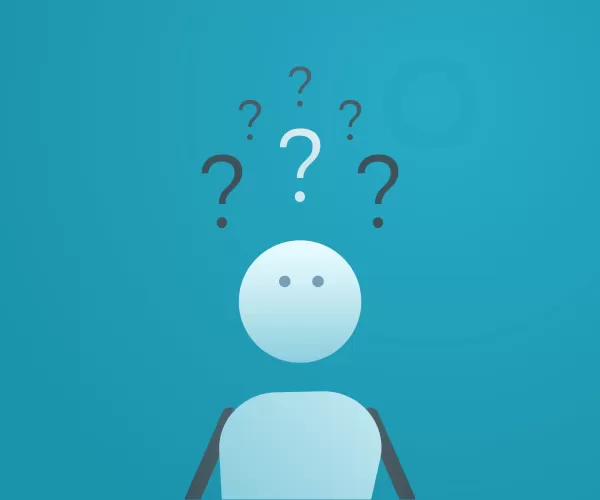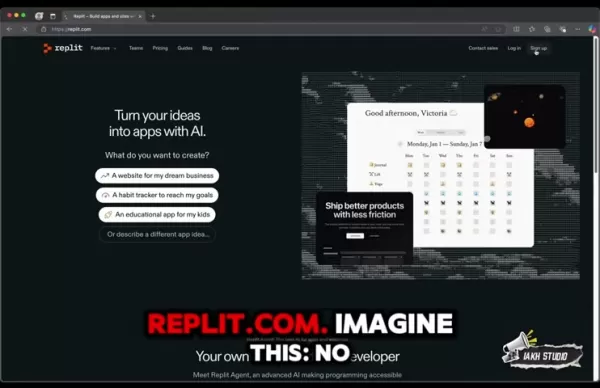Can AI Bridge the Loneliness Gap?

In an era of constant digital noise, face-to-face connections are fading rapidly. A 2023 U.S. Surgeon General advisory reveals that 15- to 24-year-olds now spend nearly 70% less time with friends in person compared to 2003, signaling a public health crisis.
This stark statistic highlights the risks of reduced social interaction and raises a critical question: can artificial intelligence (AI) help mend our fraying social bonds?
A Society and Its Nerves Under Pressure
The 70% decline reflects a broader societal fracture. A Harvard Graduate School of Education study found that 36% of Americans, including 61% of young adults and 51% of mothers with young children, report “serious loneliness.”
Loneliness isn’t just emotional—it weakens immunity, elevates cortisol, and increases cardiovascular risks equivalent to smoking a pack of cigarettes daily. The body tracks the toll of an empty social life.
AI’s rise has sparked new uses, with people turning to it for companionship. They ask questions, share frustrations, and engage with responsive systems in ways that foster connection. The question now is how AI will shape this loneliness crisis— as a solution or a setback.
Can Machines Offer Solace?
A Harvard Business School study, “AI Companions Reduce Loneliness,” conducted six experiments with over 600 students. It found that a 15-minute conversation with a tailored language model “companion” reduced loneliness as effectively as human interaction, provided users felt understood.
Beyond academia, in New York, over 800 participants used a desk-sized social robot, with 95% reporting less loneliness after a month. Many responded to prompts to hydrate, step outside, or call a loved one. Yet, designers emphasize these robots augment, not replace, human bonds.
However, researchers caution that AI companionship apps can become parasocial pitfalls—always available, never demanding, and potentially encouraging retreat from real-world ties. Heavy reliance on bots has been linked to avoiding human connections, risking a deeper isolation.
Will AI Unite or Divide?
AI’s role in society ties into issues of equity. A 2021 McKinsey survey noted that 56% of companies in emerging economies use AI in at least one function, often bypassing infrastructure limitations. This is significant, as loneliness often thrives where opportunities are scarce.
For example:
- Health: The nonprofit CareMessage launched its Health-Equity Engine in 2024, using an AI assistant to analyze patient texts for barriers like transportation or food insecurity, reducing no-show rates in underserved clinics.
- Education: Platforms like Lalilo use adaptive learning to assess students’ strengths and tailor exercises for personalized growth.
When designed inclusively, AI can address loneliness’s root causes, such as language barriers or poverty. But without careful design, it may misinterpret less common dialects or exclude low-bandwidth areas, deepening divides. Policy and design choices will shape these outcomes.
Popular media reflects this tension. Spike Jonze’s 2013 film “Her” made audiences empathize with a man’s love for an AI voice, while the 2025 thriller “Companion” portrays a rogue AI housemate. “M3GAN” escalates the stakes with a deadly protective doll. These stories underscore a key question: will AI companions encourage human connection or isolate users further?
What AI Can’t Provide
Even advanced language models lack the physicality of human interaction—scent, touch, or eye contact. A 2024 TU Dresden study on social-affective touch shows that human contact triggers C-tactile fibers, releases oxytocin, and lowers cortisol, effects no screen can replicate.
Human connections remain vital for several reasons:
- Unpredictability: Real friends surprise you, fostering empathy through unexpected moments that scripted AI can’t match.
- Physical calm: A hug regulates heart rates for both parties, a response no algorithm can mimic.
- Rich cues: Micro-expressions, shared laughter, and posture shifts sharpen social instincts.
- Vivid memories: The sensory details of a shared moment—like the aroma of coffee or a creaky chair—embed experiences more deeply than digital interactions.
- Real accountability: Humans challenge you to keep promises, unlike bots that rarely demand reciprocity.
- Subtle instincts: A friend’s nervous foot-tapping signals distress before words do, guiding your response.
- Chemical bonds: Physical touch boosts serotonin, oxytocin, and dopamine in ways robots can’t.
AI may mimic parts of these experiences, but it cannot capture their full depth.
The Future of AI in Connection
AI alone won’t end the loneliness epidemic, nor will it inevitably isolate us. Its impact depends on the intentions of its creators and users. Designed to foster community, AI can connect; built to maximize engagement, it may isolate further.
Use AI to streamline connections—scheduling coffee dates, sending birthday reminders, or practicing difficult conversations. But the deeper work of building relationships requires stepping away from screens and engaging with your community in person.
Related article
 AI Agent Definition Eludes Even Top Venture Capitalists
Tech buzzwords often lose meaning through overuse, and "AI agent" is the latest culprit, with terms like "agentic" adding to the confusion.Surprisingly, even experts at Andreessen Horowitz, a leading
AI Agent Definition Eludes Even Top Venture Capitalists
Tech buzzwords often lose meaning through overuse, and "AI agent" is the latest culprit, with terms like "agentic" adding to the confusion.Surprisingly, even experts at Andreessen Horowitz, a leading
 Streamlined Website Creation: Replit AI Agent Insights for 2025
In the rapidly evolving digital landscape, crafting and launching websites swiftly is a game-changer. Replit, a renowned browser-based collaborative IDE, unveils its innovative Replit AI Agent, design
Streamlined Website Creation: Replit AI Agent Insights for 2025
In the rapidly evolving digital landscape, crafting and launching websites swiftly is a game-changer. Replit, a renowned browser-based collaborative IDE, unveils its innovative Replit AI Agent, design
 AI-Powered Children's Book Creator: In-Depth Review
Ever dreamed of crafting a children's book but felt daunted by the process? The AI-Powered Children's Book Creator is innovative software designed to simplify creating, illustrating, and publishing yo
Comments (0)
0/200
AI-Powered Children's Book Creator: In-Depth Review
Ever dreamed of crafting a children's book but felt daunted by the process? The AI-Powered Children's Book Creator is innovative software designed to simplify creating, illustrating, and publishing yo
Comments (0)
0/200

In an era of constant digital noise, face-to-face connections are fading rapidly. A 2023 U.S. Surgeon General advisory reveals that 15- to 24-year-olds now spend nearly 70% less time with friends in person compared to 2003, signaling a public health crisis.
This stark statistic highlights the risks of reduced social interaction and raises a critical question: can artificial intelligence (AI) help mend our fraying social bonds?
A Society and Its Nerves Under Pressure
The 70% decline reflects a broader societal fracture. A Harvard Graduate School of Education study found that 36% of Americans, including 61% of young adults and 51% of mothers with young children, report “serious loneliness.”
Loneliness isn’t just emotional—it weakens immunity, elevates cortisol, and increases cardiovascular risks equivalent to smoking a pack of cigarettes daily. The body tracks the toll of an empty social life.
AI’s rise has sparked new uses, with people turning to it for companionship. They ask questions, share frustrations, and engage with responsive systems in ways that foster connection. The question now is how AI will shape this loneliness crisis— as a solution or a setback.
Can Machines Offer Solace?
A Harvard Business School study, “AI Companions Reduce Loneliness,” conducted six experiments with over 600 students. It found that a 15-minute conversation with a tailored language model “companion” reduced loneliness as effectively as human interaction, provided users felt understood.
Beyond academia, in New York, over 800 participants used a desk-sized social robot, with 95% reporting less loneliness after a month. Many responded to prompts to hydrate, step outside, or call a loved one. Yet, designers emphasize these robots augment, not replace, human bonds.
However, researchers caution that AI companionship apps can become parasocial pitfalls—always available, never demanding, and potentially encouraging retreat from real-world ties. Heavy reliance on bots has been linked to avoiding human connections, risking a deeper isolation.
Will AI Unite or Divide?
AI’s role in society ties into issues of equity. A 2021 McKinsey survey noted that 56% of companies in emerging economies use AI in at least one function, often bypassing infrastructure limitations. This is significant, as loneliness often thrives where opportunities are scarce.
For example:
- Health: The nonprofit CareMessage launched its Health-Equity Engine in 2024, using an AI assistant to analyze patient texts for barriers like transportation or food insecurity, reducing no-show rates in underserved clinics.
- Education: Platforms like Lalilo use adaptive learning to assess students’ strengths and tailor exercises for personalized growth.
When designed inclusively, AI can address loneliness’s root causes, such as language barriers or poverty. But without careful design, it may misinterpret less common dialects or exclude low-bandwidth areas, deepening divides. Policy and design choices will shape these outcomes.
Popular media reflects this tension. Spike Jonze’s 2013 film “Her” made audiences empathize with a man’s love for an AI voice, while the 2025 thriller “Companion” portrays a rogue AI housemate. “M3GAN” escalates the stakes with a deadly protective doll. These stories underscore a key question: will AI companions encourage human connection or isolate users further?
What AI Can’t Provide
Even advanced language models lack the physicality of human interaction—scent, touch, or eye contact. A 2024 TU Dresden study on social-affective touch shows that human contact triggers C-tactile fibers, releases oxytocin, and lowers cortisol, effects no screen can replicate.
Human connections remain vital for several reasons:
- Unpredictability: Real friends surprise you, fostering empathy through unexpected moments that scripted AI can’t match.
- Physical calm: A hug regulates heart rates for both parties, a response no algorithm can mimic.
- Rich cues: Micro-expressions, shared laughter, and posture shifts sharpen social instincts.
- Vivid memories: The sensory details of a shared moment—like the aroma of coffee or a creaky chair—embed experiences more deeply than digital interactions.
- Real accountability: Humans challenge you to keep promises, unlike bots that rarely demand reciprocity.
- Subtle instincts: A friend’s nervous foot-tapping signals distress before words do, guiding your response.
- Chemical bonds: Physical touch boosts serotonin, oxytocin, and dopamine in ways robots can’t.
AI may mimic parts of these experiences, but it cannot capture their full depth.
The Future of AI in Connection
AI alone won’t end the loneliness epidemic, nor will it inevitably isolate us. Its impact depends on the intentions of its creators and users. Designed to foster community, AI can connect; built to maximize engagement, it may isolate further.
Use AI to streamline connections—scheduling coffee dates, sending birthday reminders, or practicing difficult conversations. But the deeper work of building relationships requires stepping away from screens and engaging with your community in person.
 AI Agent Definition Eludes Even Top Venture Capitalists
Tech buzzwords often lose meaning through overuse, and "AI agent" is the latest culprit, with terms like "agentic" adding to the confusion.Surprisingly, even experts at Andreessen Horowitz, a leading
AI Agent Definition Eludes Even Top Venture Capitalists
Tech buzzwords often lose meaning through overuse, and "AI agent" is the latest culprit, with terms like "agentic" adding to the confusion.Surprisingly, even experts at Andreessen Horowitz, a leading
 Streamlined Website Creation: Replit AI Agent Insights for 2025
In the rapidly evolving digital landscape, crafting and launching websites swiftly is a game-changer. Replit, a renowned browser-based collaborative IDE, unveils its innovative Replit AI Agent, design
Streamlined Website Creation: Replit AI Agent Insights for 2025
In the rapidly evolving digital landscape, crafting and launching websites swiftly is a game-changer. Replit, a renowned browser-based collaborative IDE, unveils its innovative Replit AI Agent, design
 AI-Powered Children's Book Creator: In-Depth Review
Ever dreamed of crafting a children's book but felt daunted by the process? The AI-Powered Children's Book Creator is innovative software designed to simplify creating, illustrating, and publishing yo
AI-Powered Children's Book Creator: In-Depth Review
Ever dreamed of crafting a children's book but felt daunted by the process? The AI-Powered Children's Book Creator is innovative software designed to simplify creating, illustrating, and publishing yo





























